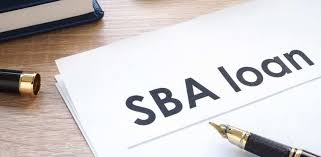Government bonds are a safe and secure investment that can provide investors with a steady stream of income. They are also a good way to diversify your portfolio and reduce your risk. If you are looking for a low-risk investment with the potential for growth, then government bonds may be a good option for you.
So in this article, we will discuss how to buy government bonds. We will cover the different types of government bonds, the risks and rewards of investing in government bonds, and how to find a reputable broker. By the end of this article, you will have all the information you need to decide whether to invest in government bonds.
Let’s hit the road without further ado…
What Is a Government Bond?
A government bond is a type of financial security issued by the government to fund its spending and commitments. Coupon payments are periodic interest payments made by government bonds. Government bonds issued by national governments are frequently seen as low-risk investments because the issuing government guarantees them.
What to Look for When Buying Bonds
When investing in bonds, there are two ways to earn money. One strategy is to purchase the bond and hold it until it matures, at which point you can collect the principal and interest.
However, if the bond price rises since you bought it, selling it early and profit is another option. The price of a bond can rise if the borrower’s credit rating improves or interest rates fall. Bond prices are inversely related to interest rates, which means that when interest rates rise, bond prices fall, and vice versa.
Bond investments are not all created equal. Use this three-step process to determine whether various bonds are appropriate for your portfolio:
#1. Can the Borrower Pay Its Bonds?
The answer to this question is crucial because if a company is unable to pay its bonds — its promise to repay the money lent with interest — there is no reason for the average investor to consider purchasing them. With a little detective work, you can determine whether the company is able to meet its debt obligations.
Rating agencies rate bonds, with three major ones dominating the industry: Moody’s, Standard & Poor’s, and Fitch. They assess creditworthiness by assigning credit ratings to corporations and governments and the bonds they issue. The higher the rating — AAA is the highest, and it goes down from there, much like school grades — the more likely the company will honor its obligations and pay lower interest rates.
Corporate Bonds:
Aside from ratings, the quickest way to assess the safety of a company-issued bond is to examine how much interest a company pays in relation to its income. Corporate bonds typically pay higher interest rates than government bonds due to the higher risk of default. If the company does not have the income to support its payments, it will eventually fail, just like a homeowner who pays off a mortgage every month.
Begin with the most recent annual operating income and interest expense from the company’s income statement. This information is available for every publicly traded company in the United States in a 10-K filing, on a company’s website, or in the EDGAR database on the Securities and Exchange Commission’s website. Operating income differs from net income in that it includes interest payments (which are tax-deductible) and taxes, and it is the best indicator of a company’s ability to pay its debts.
Government Bonds:
Evaluating government-issued bonds is more difficult because governments rarely have large surplus revenues that indicate stability. What’s the good news? Government bonds are generally safer investments, with those issued by the United States federal government deemed the safest in the world and rated AAA.
Treasury bonds, also known as T-bonds in the United States, are so safe that investors refer to the government’s interest rate as the “risk-free rate.” As a result of the low risk of default, government bonds typically do not offer higher interest rates. Treasury Inflation-Protected Securities (TIPS) and I bonds are two exceptions, as their interest rates are adjusted on a regular basis based on inflation. As of November 8, 2022, I bonds are offering historic rates of nearly 7%.
Municipalities Bonds:
While historically safe, bonds issued by cities, states, and municipalities are not quite as rock solid. You can learn more about these bonds by visiting the Electronic Municipal Market Access (EMMA) website, which includes a bond’s official prospectus, audited financial statements, and ongoing financial disclosures, such as payment delinquencies and defaults.
A government’s credit rating is a good first indicator of its creditworthiness, and you can follow up to see if there have been any recent defaults or other financial issues that could lead to a future default or delinquency. Another advantage is that municipal bond income is generally tax-free at both the federal and state levels if purchased in the state where you live.
Zero-coupon bonds, also known as “deep discount” bonds, are bonds that do not pay interest. They are sold at a lower price than their face value, and a profit is made if the bond is held until maturity. Treasury bills, also known as T bills, are an example of a zero-coupon bond.
#2. Is Now a Good Time to Buy Bonds?
Once the interest rate on a bond is determined and made available to investors, the bond trades in the debt market. The movement of prevailing interest rates then determines how the bond’s price fluctuates.
Bond prices typically move anticyclically. Interest rates rise as the economy heats up, causing bond prices to fall. Bond prices rise as interest rates fall as the economy cools. Bonds may appear to be a great buy during boom times (when prices are lowest) and a sell when the economy begins to recover. But it’s not that easy.
Investors attempt to forecast whether interest rates will rise or fall. However, waiting to buy bonds can be considered market timing, which is not a good idea.
Many bond investors “ladder” their bond exposure to managing this uncertainty. Investors purchase a number of bonds that mature over time. The principal of maturing bonds is reinvested, and the ladder grows. Laddering effectively diversifies interest-rate risk but at the expense of lower yield.
#3. What Bonds Are Appropriate for My Portfolio?
The type of bonds that are right for you are determined by several factors, including your risk tolerance, tax situation, and time horizon, as well as when, if ever, you require income from these bonds.
A good bond allocation might include each type of bond — corporate, federal, and municipal bonds — to diversify the portfolio and reduce principal risk. Investors can also spread out the maturity dates to reduce interest-rate risk.
Diversifying a bond portfolio can be difficult because bonds are typically sold in $1,000 increments, making it difficult to build a diverse portfolio.
Instead, buying bond ETFs is much simpler. These funds can provide diversified exposure to the bond types you desire, and you can mix and match bond ETFs even if you are unable to invest a large sum at once. Broadening your exposure also has the advantage of lowering your risk by not putting all of your eggs in one basket.
How to Buy Government Bonds
Investing in a government bond involves lending money to the government at a predetermined interest rate.
Governments use them to raise money for infrastructure or new projects, and investors receive a fixed return paid regularly.
In most countries, bonds are known as gifts or treasuries.
Treasuries can be purchased in a variety of ways. Treasury Direct is a good choice for many people. However, buying bonds on the secondary market or via exchange-traded funds (ETFs) is frequently preferable for investors and retirement savers with brokerage accounts. Additionally, compared to Treasury Direct, Treasury money market accounts provide additional ease and liquidity.
How Do Government Bonds Work?
By purchasing a government bond, you agree to lend the government the specified amount for a specified time. In exchange, the government will issue you a coupon, or a specified amount of interest, at regular intervals. Bonds are fixed-income assets as a result.
So your initial investment, known as the principal, will be repaid to you when the Bond matures. The maturity date is the day on which you get the principal. You may purchase a bond that matures in less than a year or 30 years or more. Variable bonds will have various maturity dates.
How to Buy Government Bonds in the U.S.
It is called Treasury Bonds in the U.S., and here is a list of some ways to buy bonds in the U.S.
Treasury Direct
Treasury Direct is an electronic marketplace and online fund that allows investors to buy, hold, and redeem Treasury securities. The U.S. Department of Treasury operates the Treasury Direct system.
Buying Treasuries as ETFs
Most brokerages offer the option to purchase Treasury securities using ETFs. Like stocks, ETFs can be purchased and sold, and many are eligible for commission-free trades. Investors can select between government bond ETFs concentrating on short-term, long-term, TIPS, and FRNs.
Buying Treasury Bills Through the Money Market
Investing in a Treasury money market mutual fund can also purchase Treasury notes. The yields on these funds are often constrained by the rates on the shortest-term Treasury bills and their minimal expenses.
The Office of Financial Research of the U.S. Treasury keeps tabs on the investments made by U.S. money market mutual funds and financial institutions.
Buying Treasuries in the Secondary Market
However, Treasuries can be purchased on the secondary market more quickly than most people realize.
Again, the cost varies, but many brokerages give their clients complete access to the bond market. Many of the best brokerages offer free trading for Treasury bonds if buying and selling bonds from the government is something you care about.
You eliminate the annual costs associated with money markets and ETFs. Although, all you need to know is when the Bond will mature, so buying regular government bonds from the U.S. is more straightforward than buying most other bonds.
How to Buy Government Bonds on Fidelity
You are purchasing second-tier Treasury bonds on Fidelity. To purchase bonds on Fidelity, sign in to your brokerage account and go to the “Fixed Income” area. There, they’ll give you a fast rundown of the current rates for about 75,000 fixed-income securities, ranging from brokered CDs to high-yield corporate bonds.
Retirement planning, wealth management, brokerage services, college savings, and other financial planning, guidance, and instructional tools are all provided by Fidelity for investors and novice investors. No account fees, opening minimums for retail brokerage accounts, commission-free trades, and more are just a few of the benefits of its transparent pricing.
These are the easy steps to take while buying bonds on Fidelity.
How to Buy Government Bonds on Robinhood
Hence, making your money work for you is possible if you have a Robinhood brokerage account.
With Robinhood Financial, you can buy government bonds to invest in more than 5,000 assets, including most American equities and exchange-traded funds (ETFs) listed on American exchanges. American Depositary Receipts (ADRs) provide access to over 650 worldwide stocks and options.
So while investing in Robinhood, you can choose from the following:
Robinhood Financial currently supports the following assets:
- U.S. exchange-listed stocks and ETFs.
- Options contracts for U.S. Exchange-Listed Stocks and ETFs.
- ADRs for over 650 globally-listed companies.
Which Government Bonds Are the Best to Buy?
Below is a list of the best government bonds to buy.
U.S. Treasury Bonds
One of the safest, if not the safest, investments globally is holding U.S. Treasury bonds. They are risk-free. They are not subject to interest rate risk but are free from credit risk.
U.S. Treasury bonds are commonly used as a standard for other bond prices or yields. Looking at a bond’s yield can help you better understand its price. Most bonds’ yields are expressed as a yield spread to a comparable U.S. Treasury bond to indicate relative value.
Corporate Bonds
Although not all publicly traded corporations generate capital by issuing bonds, hundreds of different corporate bond issuers are accessible.
Because corporate bonds include credit risk, analyzing the company’s cash flow and business prospects is essential.
Business prospects and cash flow are not the same; even if a firm has a promising future, it may not have enough cash to pay its debts.
Ratings for corporate bonds are provided by credit rating organizations like Moody’s and Standard & Poor’s to assist investors in determining the issuer’s capacity to make timely interest and principal payments.
A helpful way to compare the relative worth of corporate bonds and U.S. Treasuries is through yield. Considering maturity when comparing two or more corporate bonds based on yield is crucial.
Mortgage Bonds
Mortgage bonds, like corporate bonds, have some credit risk and thus trade at a yield spread to U.S. Treasuries.
These bonds can carry prepayment and extension risks. These interest rate risks are related to the likelihood that the underlying borrowers will refinance their mortgages as interest rates change.
In other words, mortgage bonds contain an in-built call option that the borrower can exercise at any moment.
The value of this call option significantly impacts the yields of mortgage-backed securities.
Investors comparing the relative value of mortgages and other bonds must understand this.
How Much Is 1000 Bond Worth?
You can know the value of your Bond using a bond calculator.
The Bond is worth its total value upon redemption. The interest is given electronically to your account.
- HOW TO BUY I BONDS FROM TREASURY: All You Should Know
- HOW TO BUY TREASURY BONDS: What You Should Know & Guide
- BONDS TO INVEST: Best Bonds, Types, Governmental & How to Invest in it
- Inverted Yield Curve: All You Need to Know With Detailed Analysis (+Examples)






